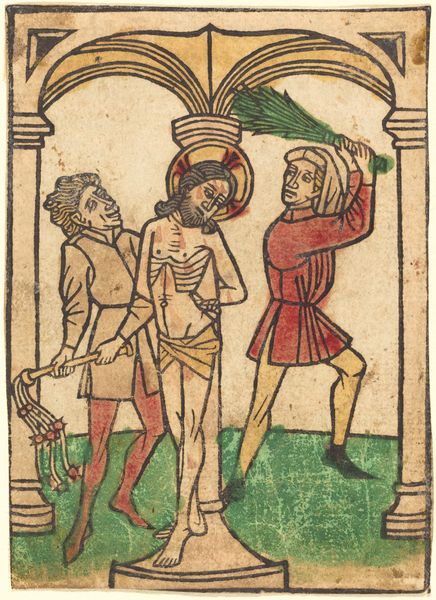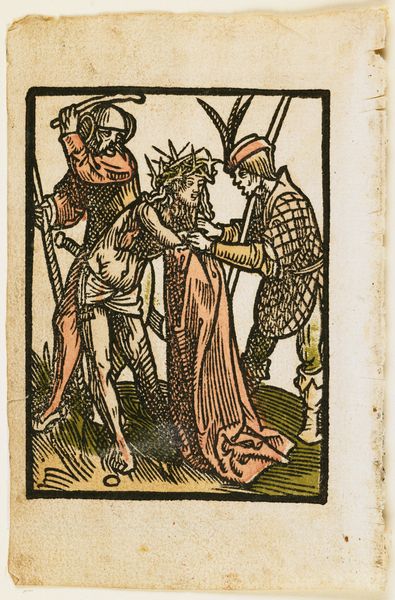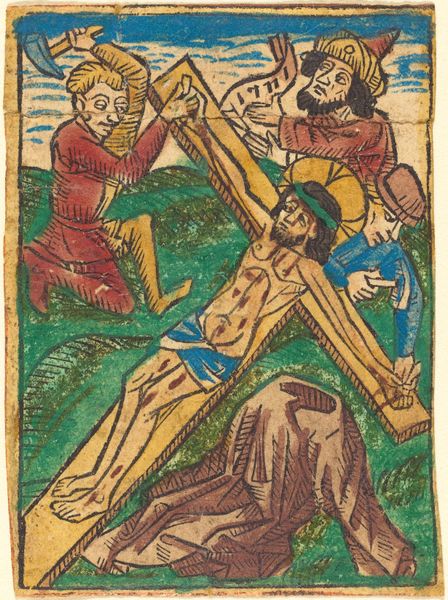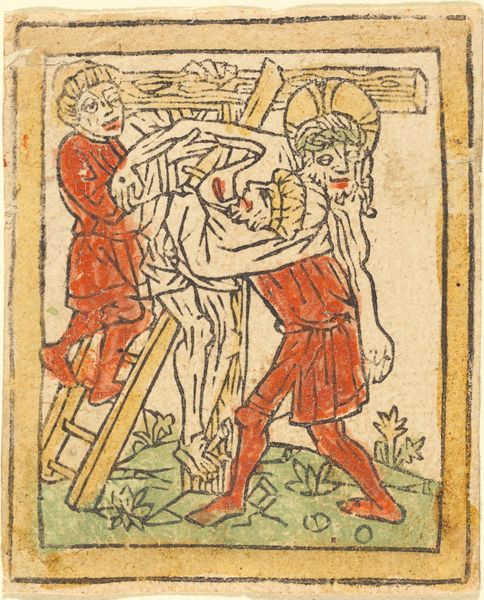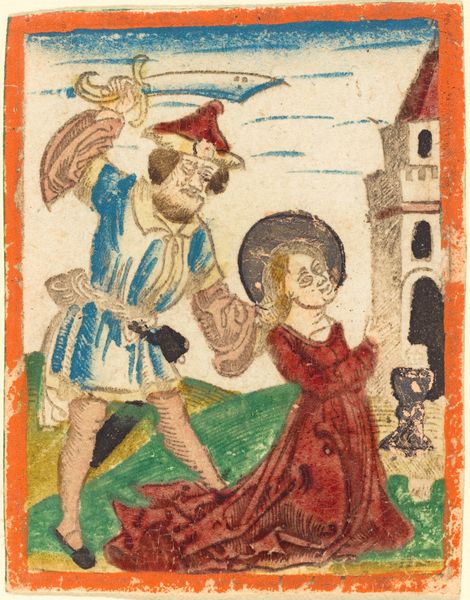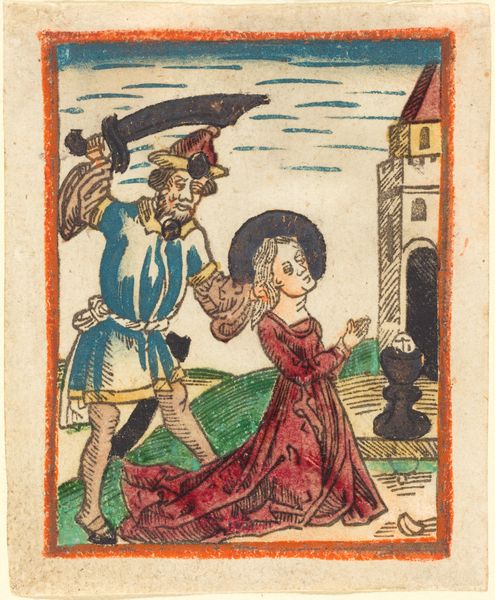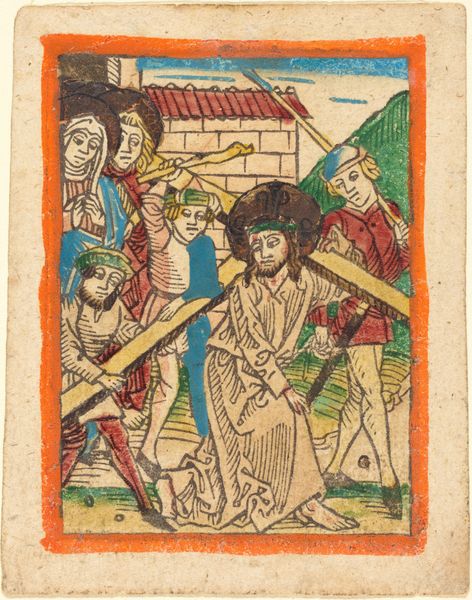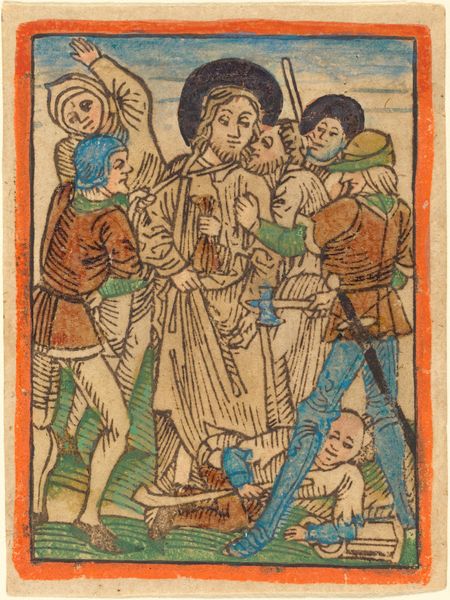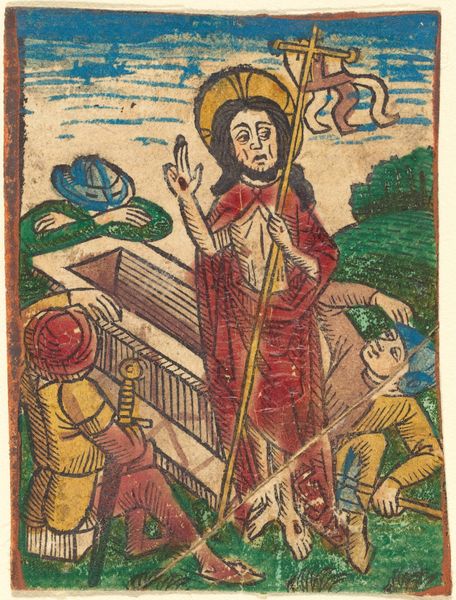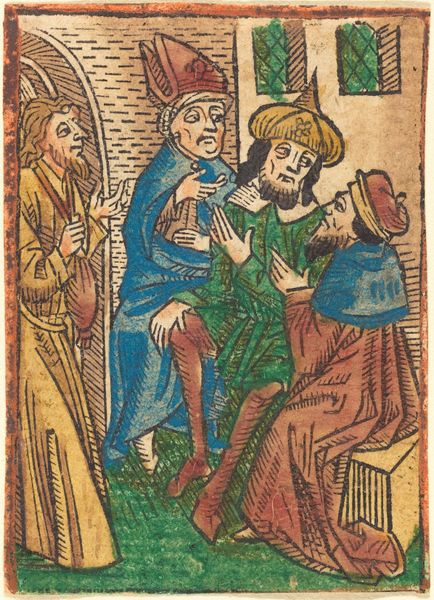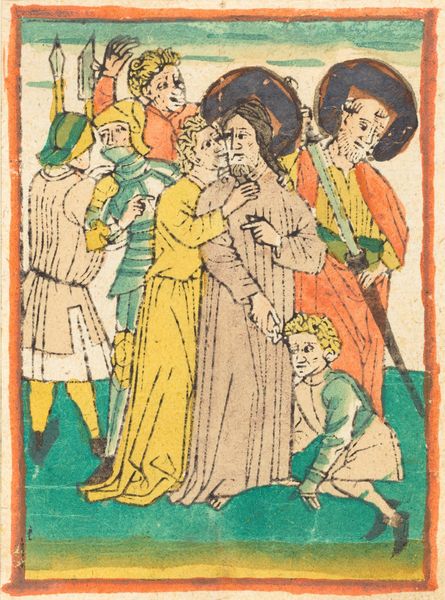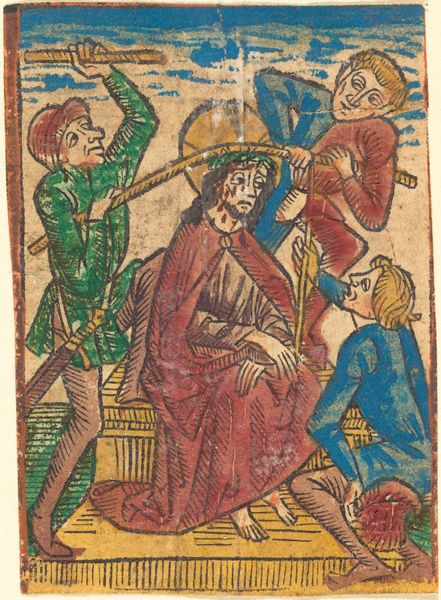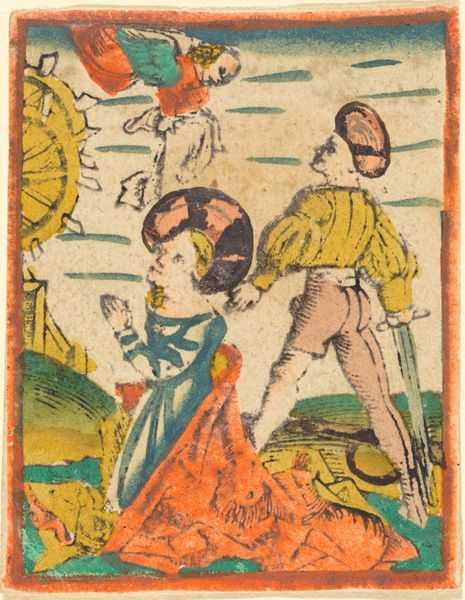
drawing, coloured-pencil, tempera, print, ink
#
drawing
#
coloured-pencil
#
medieval
#
water colours
#
narrative-art
#
tempera
# print
#
figuration
#
ink
#
coloured pencil
Copyright: National Gallery of Art: CC0 1.0
Curator: Looking at "Martyrdom of a Saint", a print made around 1480 by an anonymous artist, I’m immediately struck by its vibrant yet unsettling color palette. What are your initial thoughts? Editor: The composition, for me, creates a distinct emotional dissonance. The bright, almost cheerful hues clash starkly with the brutal act depicted, focusing my eye on the stark juxtaposition. The line work feels decisive and the image has great impact given it's probably quite small. Curator: Indeed. This small work likely functioned within a very specific religious context, possibly as part of a larger series depicting the lives of saints. I believe we can consider it through a postcolonial lens. How do ideas about justice and divine authority intersect in this scene? Editor: The flat, almost two-dimensional representation, typical of late medieval art, emphasizes a symbolic rather than a realistic interpretation. The rigid stances of the figures and their stylised attire highlight the act itself, creating a stage-like effect that removes us from lived experiences of these events, reinforcing certain structures through clear depiction of gesture. The colour blocks also serve this aim. Curator: That's a pertinent point, reflecting a broader interest in visually encoding cultural and religious ideologies prevalent during the era. Considering the social hierarchies of the time, whose narratives are amplified and whose are suppressed in this portrayal of martyrdom? Editor: There's a raw immediacy to the execution of form here, that is so distinct, especially when it comes to use of simple coloured pencil alongside bolder inks. But ultimately it does lack complexity as an object when held up to works with multiple formal innovations. The formal decisions keep it bound to a tradition rather than acting as a rupture. Curator: I understand your perspective, though I feel this "simplicity" does make this a window into its time, an echo of historical power structures and theological interpretations embedded in the very fiber of its creation. Editor: I suppose when seen in light of your view on how narratives impact us now, and in historical terms, its an interesting object that creates much food for thought. Curator: Exactly! These works force us to contemplate the legacy of cultural and religious dominance. Editor: It really makes you consider not only artistic methods but the symbolic intent underpinning its creation, providing a strong vision overall.
Comments
No comments
Be the first to comment and join the conversation on the ultimate creative platform.
